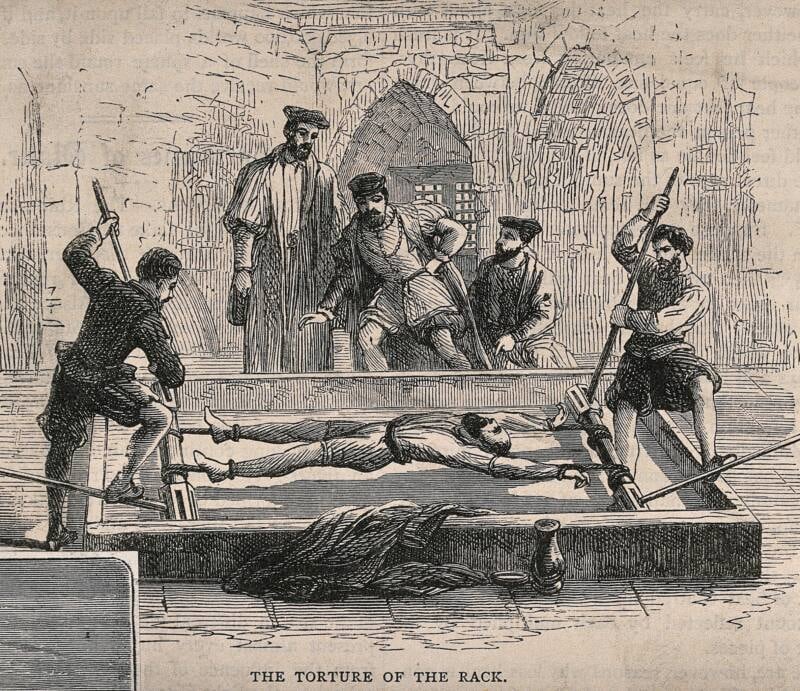These torture devices from the Middle Ages will make you glad you live in modern times.
Picture a dark, dank cell. The dripping of water. The skittering of rats. And the tortured moans of the people imprisoned there. During the Middle Ages, medieval torture devices made life for anyone accused of a crime — regardless of whether they were guilty — especially agonizing.
These torture devices came in different shapes and sizes and served different purposes. Devices like the rack or the breaking wheel, for example, were made for dislocating joints and crushing bones. Places like oubliettes and practices like immurement were designed to make people lose their minds in isolation. And medieval torture devices like the Spanish Donkey or the Judas Cradle were designed to cause genital pain.
In the list below, learn about 11 of the most excruciating torture devices from the Middle Ages. Though some thankfully stayed put in medieval times, others on the list were actually used for centuries afterward.
Torture Devices Of The Middle Ages: The Rack

Wellcome ImagesA depiction of a man being tortured on the rack.
Of all the medieval torture devices, the rack is perhaps the most well-known.
Though made famous during the Middle Ages, historians believe that the rack actually originated in ancient Greece. Herostratus, an arsonist who destroyed the Temple of Artemis (one of the Seven Wonders of the Ancient World) was tortured to death on an early rack in the fourth century B.C.E.
So what exactly was it?

Steve Collis/Wikimedia CommonsAn example of a rack at the Tower of London.
Comprised of a wooden frame, the rack’s design was very simple. The victim would be tied to rollers on either end, which would then be cranked by their torturer or torturers, stretching out their limbs. This was often done quite slowly to put increasingly painful pressure on the victim’s entire body.
Perhaps the most famous victim of rack-like torture is Scottish rebel William Wallace. In 1305, Wallace was captured by the English and subjected to a number of gruesome torture methods, including stretching.
Use of the rack continued for centuries. In fact, it wasn’t formally banned in Britain until 1708 — and it wasn’t banned worldwide until 1984 by the United Nations. Cruel but simple, the rack was a terrifying medieval torture device. But it’s far from the only tool that interrogators used on their victims.





